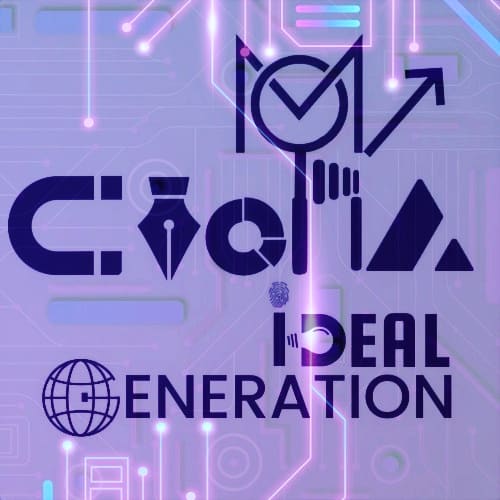
SEO Starter Guide: Everything You Need to Know
- Eman Hazza

- Jan 5, 2024
- 8 min read
Creating a comprehensive SEO (Search Engine Optimization) guide involves covering various aspects of optimizing a website for search engines.
In this Ultimate Guide you will find all your questions answered in Comprehensive details that cover key elements to improve your website's visibility and rankings in all search engine results:

But First, Let's outline and organise our Blog for readability and accessibility, Because what blogger want their readers dozing of in the middle of an interesting blogpost:
Definition of SEO
Importance of SEO integration in Digital Content
SEO Key elements and Aspects that showcase ways you can Optimise your content/website/business for Search Engine
Types of SEO
Honorable Considerations to keep in mind
Monutopia's Personal Note and advice to make the best out of SEO
For Starters, we ought to define the Term SEO;
AKA Search Engine Optimization a term that refers to the practice of optimizing a website or online content to improve its visibility and ranking on search engine results pages (SERPs). The ultimate goal of SEO is to increase the organic (non-paid) traffic to a website by enhancing its relevance and credibility in the eyes of search engines.
But Why is it so vital to integrate SEO while Building a Website or Promoting a Brand
Because by implementing effective SEO strategies, website owners can rank higher in search results for specific keywords relevant to their content or business. This increased visibility can lead to more organic traffic, better user engagement, and improved online presence. SEO is an ongoing process, as search engines regularly update their algorithms, and website content and strategies need to adapt to these changes to maintain or improve rankings. As we delve into the Blog you will learn that such Optimization can be done through some well proven tactics that we will tackle shortly.
Now that we have understood what is SEO and why it is important for you as a Content Creator, we will handle SEO Key elements and Aspects that showcase ways and techniques with which you can Optimise your content/website/business for Search Engine
P.S before we embark our exploration, I want to emphasize the importance of writing in bullets and how to enhance the visibility and reachability in the Blog
The first and far most Component is:
1. Keyword Research:
Using tools like Google Keyword Planner, to identify relevant keywords in your niche.
Focusing on long-tail keywords and considering user intent. These are more specific and often have higher conversion rates. For example, instead of targeting "shoes," focus on "best running shoes for beginners.
What are Long-tail keywords? Long-tail keywords are specific and usually longer phrases that users enter into search engines when looking for particular information or products. Unlike short, generic keywords, long-tail keywords are more targeted and typically have lower search volumes. They are called "long-tail" because, when visualized on a graph, they form a long tail, representing the numerous, less commonly searched terms. What is User Intent? User intent refers to the goal or purpose a user has in mind when conducting a search query on a search engine. Understanding user intent is crucial for search engines to provide relevant and useful results to users. User Intent allows for aligning content and marketing strategies with what users are looking for. By tailoring content to match user intent, you can provide a better user experience and increase the likelihood of achieving the desired outcome, whether it's attracting more visitors, generating leads, or making sales. |
2. User Experience (UX):
Improving website navigation and structure: Simplify site navigation. Users and search engines should easily find important pages.
Optimizing interface for mobile devices: Test your site on various devices to ensure a seamless experience.
Reducing bounce rates and increase dwell time: Create engaging content and improve page load times to decrease bounce rates.
Bounce Rates sounds like a cool term, why would someone not want to bounce their rates? Bounce rate refers to the percentage of website visitors who navigate away from the site after viewing only one page, rather than continuing to interact with other pages on the site. It is a metric often used in web analytics to assess the effectiveness and engagement level of a website. How do you reduce that anyway? You as a website owner may focus on improving page content, optimize the user experience, enhance page load times, and ensure that the landing pages align with the visitors' expectations. Now it's obvious that the contrary metric is dwell time which as per SEO ought to be increased in order to measure your users interactions |

3. Analytics and Monitoring:
Use Google Analytics to track website performance, utilize the data to understand user behavior, traffic sources, and content performance.
Regularly audit and update your SEO strategy based on performance data.
4. Content Strategy:
Develop a content calendar and create high-quality, relevant content regularly, you can do so by setting a plan and a schedule for content creation because Consistency is key.
Diversify content types (blog posts, videos, infographics, podcasts, etc.) to cater to different audiences.
5. E-A-T (Expertise, Authoritativeness, Trustworthiness):
Establish yourself as an expert in your field, showcase your knowledge through well-researched and accurate content.
Build quality backlinks from reputable sources.
Build trust through transparent and accurate information and secure your site with an SSL certificate AKA (Secure Sockets Layer) that provides a secure, encrypted connection between a user's web browser and a web server. to ensure that all data transmitted between the two remains private and integral.
6. Another Vital element in SEO is Site Architecture, which can be broken down to:
Logical Structure: Organize your site logically with a clear hierarchy; which is basically organizing your website logically with a clear hierarchy to provide a positive user experience and help both users and search engines navigate your content effectively. This helps search engines understand the relationship between different pages.
Internal Linking: Link relevant pages within your content to distribute authority and guide users to important pages.
7. Rich Snippets and Schema Markup:
Rich Snippets: In simpler terms, you can enhance your search results with additional information beyond the meta descriptions (reviews, ratings, events) using structured data.
Schema Markup: Use markup tool to provide search engines with context about your content. this can be typically done via website like schema.org, you just go there, enter your website data and info as directed and use the markup they produce for enhanced and more advanced SEO.
8. Social Media Integration:
Social Sharing Buttons: Include social sharing buttons on your content to encourage sharing.
Social Profiles: Optimize social media profiles with accurate information and a link back to your website. Remember to use the relevant unique style that links back to your site to ensure that users dwell on your marketing efforts.

9. Link Building Strategies:
Guest Posting: Contribute high-quality content to authoritative websites in your niche. As a creator, it's all about sharing which is originally a virtue, reach out for other creators and ask for permission to feature some of their content that you know may resonate with your audience, because you want them to know that you are supporting other creators in your niche as well as your transparency.
Broken Link Building: Identify broken links on other websites and offer your content as a replacement. This is a great way to prove your efficiency and integration to other creators as well as to your customers.
It's now pivotal that we explore the different types of SEO and how Each type works:
1. On-Page SEO:
Title Tags and Meta Descriptions: Create unique and compelling titles for each page, including the target keyword. Craft these to be both search engine-friendly and compelling for users. Include the primary keyword but make it engaging.
Meta Descriptions: Write compelling meta descriptions that encourage clicks and include relevant keywords.
Heading Tags: Use H1, H2, and H3 tags to structure your content and highlight important keywords.: Use H1 for main titles, H2 for subsections, and so on. This helps search engines understand the structure of your content.
URL Structure: Keep URLs short, descriptive, and include the target keyword. Make URLs readable and include main words. Avoid long strings of numbers or meaningless characters.
Content Optimization: Create high-quality, relevant, and engaging content with proper keyword usage.
Image Optimization: Use descriptive alternative text, compress images, and ensure fast loading times.
2. Off-Page SEO:
Backlinks: Build high-quality, authoritative backlinks through guest posting, outreach, and content promotion. Focus on quality over quantity. Natural, authoritative links contribute significantly to your site's credibility.
Social Signals: Encourage social sharing and engagement on social media platforms. If not through direct ranking factor, a strong social presence can indirectly influence your SEO. Share content on social media continuously platforms and encourage engagement.
Brand Mentions: Monitor and manage online mentions of your brand. Monitor brand mentions using tools like Google Alerts. Respond to both positive and negative mentions, because you always represent your brand for better or for worse.
3. Local SEO:
Google My Business: Claim and optimize your listing on Google to ensure accurate business information, respond to reviews, and add high-quality photos.
NAP Consistency: Aka (Name, Address, Phone Number): Maintain consistency in your business name, address, and phone number across online directories.
Encourage customer reviews, via adding Call to Action buttons
4. Voice Search Optimization:
Natural Language: Optimize content for conversational queries as voice search becomes more prevalent, such as Spaces Feature on X app
Local Optimization: Since many voice searches are location-based, therefore you ought to prioritize your local SEO efforts.
5. Video SEO:
YouTube Optimization: If you use video Platforms; optimize titles, descriptions, and tags. Embed videos on relevant pages of your website.
Transcriptions: Provide a more detailed transcripts for videos to make the content accessible to search engines.
6. SEO for E-commerce:
Product Optimization: Optimize product pages with clear descriptions, high-quality images, and customer reviews, ratings section, sorted reviews, all the tools at hand to Optimize efficiency in the user experience.
Structured Data for Products: Implement structured data for products to enhance visibility in search results by using a specific vocabulary or schema to mark up HTML documents.
By now, you must have already realised what a broad subject SEO is, if you want to read more about the technicality behind webpage programming to optimize search engine, do let me know, because I'm a nerdy and doing research is one of my many hobbies to come up with a guide so you don't have to access many pages just for one subject, I'm here to find an end to that. If you haven't subscribed already to my blogpost what are you waiting for, click the buttons below to subscribe for my website or for my Spaces by Wix app, I make amazing relatable content.
Alongside every great guide there are some Honorable Considerations when it comes to SEO elements, to keep in mind and that are worth mentioning to get the picture as follows:

1. User Engagement Signals:
Click-Through Rate (CTR): Write compelling meta titles and descriptions to increase CTR from search results.
Dwell Time: Aim for longer user sessions by providing valuable and engaging content and foster the user attention.
2. Technical Audits:
Regular Audits: Conduct technical SEO audits to identify and fix issues affecting your site's performance.
Crawl Errors: Monitor and fix crawl errors reported in Google Search Console.
While these elements seem far fetched and complex, you may try the google help page to have a step by step guide into such audits, remember it's a process of trial and error.
3. Mobile-First Indexing:
Responsive Design: Ensure your site is designed to work seamlessly on various screen sizes.
Mobile Page Speed: Optimize specifically for mobile page speed.
These tools can be directly provided through your webpage or domain provider. Each website maker is designed differently, through help articles or tutorials, you can find just the right tools to optimize the visage of your respective website. WIX tutorials are a great examples of how to SEO.
4. Page Experience Update:
Core Web Vitals: Pay attention to Google's Core Web Vitals, focusing on aspects like loading, interactivity, and visual stability.
5. Artificial Intelligence and SEO:
AI Tools: Explore the use of AI tools for content creation, data analysis, and personalization.
RankBrain: Which is machine learning-based algorithm used by Google to improve the relevance of search results. It is a part of Google's overall search algorithm and plays a significant role in interpreting and understanding user queries.
Suggest a blogpost that you want me to talk about, I'm so eager to write about Social Media Algorithm and How To Tailor Content
6. Page Speed Optimization: This can be done by optimizing Images, compressing images and using modern formats such as JPEG or Mp4 videos to reduce file sizes.
7. AI-Generated Content and SEO Ethics:
Ethical Considerations: Stay informed about ethical concerns related to AI-generated content and SEO practices.
Shoutout to you readers for reaching all the way through what a Journey, On the other hand, let's gain Monutopia's Personal advice on this guide because it is important to stay motivated and confident in your efforts;
Keep in mind that as SEO continues to evolve, staying informed and adapting your strategy to emerging trends and technologies is crucial. Regularly monitor your website's performance, user behavior, and search engine algorithms to ensure long-term success in the ever-changing landscape of SEO. You may even join SEO communities and forums for discussions and insights. know that SEO is an ongoing process, and it's essential to adapt your strategy based on industry changes and the evolving landscape of search engines. Regularly assess your performance and continue refining your strategy for long-term success in search engine rankings. Assure you Update any Old Content by refreshing existing content to keep it relevant and valuable. Always add New Content by Regular publishing to demonstrate the freshness of your website. Ensure your business information is consistent across local directories and encourage positive reviews on platforms e.g. Google My Business. Engage with Audience to foster a sense of community around your brand. Respond to comments and encourage discussions. Incorporate your users reviews insights into your content and user experience to enhance your Accredibility.


